Stylish Raised Bed Ideas
If you want more than the standard box, here’s how to kick it up a notch
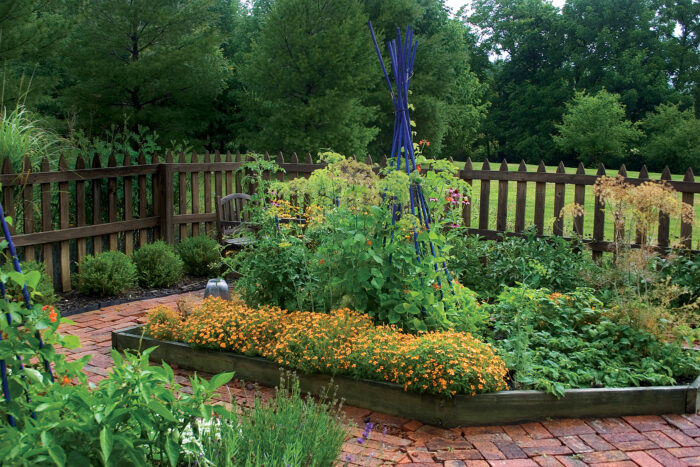
Raised beds are so ubiquitous in vegetable gardens these days that we rarely stop to consider their actual purpose. Their most obvious use is to create a garden bed with improved drainage, which is beneficial for many crops, but raised beds can serve other purposes, as well. They make vegetable gardening just a bit easier on our backs, give us an option to garden in places we otherwise could not and can make it easier to combat garden pests. At the very least, they define a garden bed and keep amended soil from spreading beyond its intended boundary. But also, they just plain look good. Raised beds lend an air of organization and structure to a veggie patch, turning a utilitarian space into a more substantial focal point in our gardens. While most raised beds are made out of planks or beams of wood, they don’t have to be. Here is a range of beds to serve as inspiration for your garden.
Raise them up for easy access
These tall raised beds were designed with the disabled in mind. Even people confined to wheelchairs can grow their own flowers and veggies when the garden is raised to table height. These plantings are made even more interesting with decorative structures made out of colorfully painted bamboo stakes.
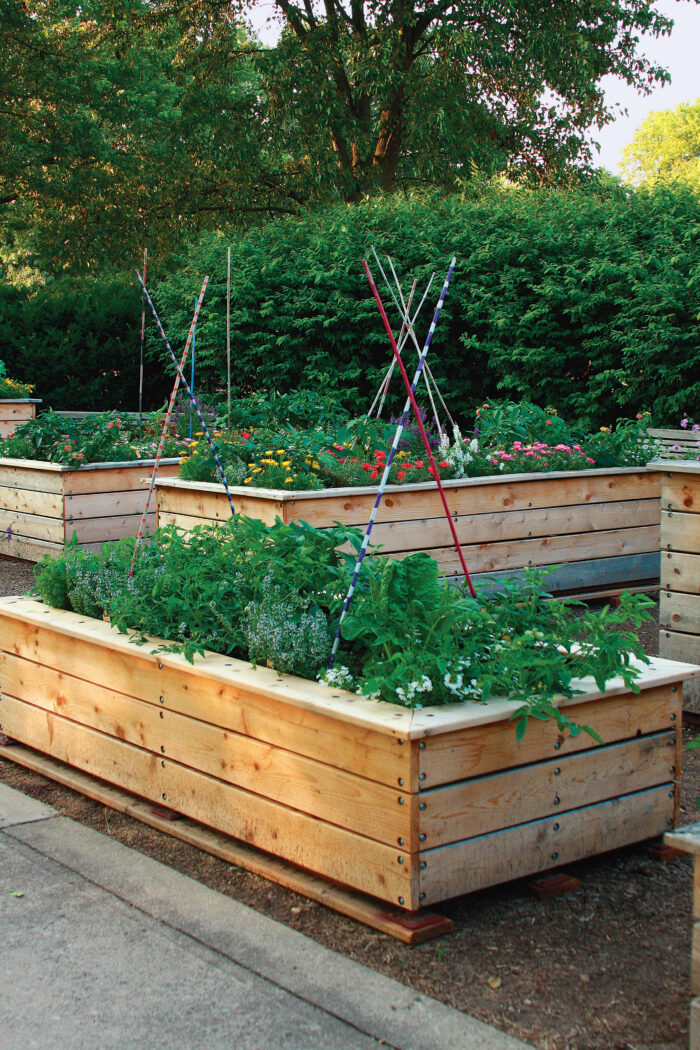
Fine-crafted details enhance the functionality and the appearance
These gardeners incorporated their raised beds into an attractive overall structure with fencing and a gate that keeps out deer and other pests. The fence panels swing open for easy access. The extra-tall height of the beds means that they don’t have to get on their hands and knees to work in the garden.
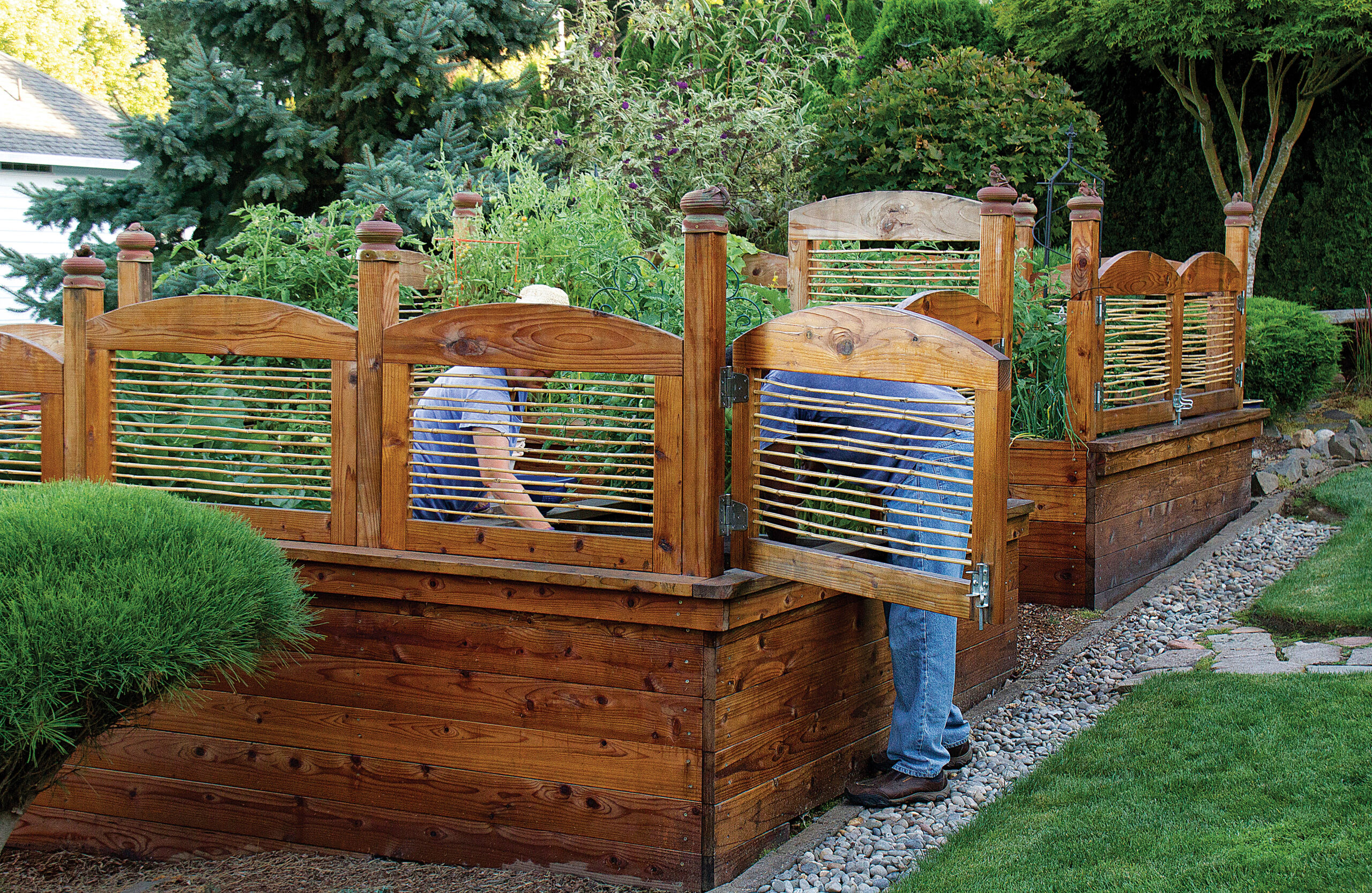
Dress it up for bigger impact
This raised bed made out of simple boards may be humble, but it fits right into this casual, cottage-style garden. And it gets a big boost of interest from the matching picket fence, a trimming of colorful flowers, and a bright blue tuteur for climbing vines. The brick paths eliminate the need for weeding.
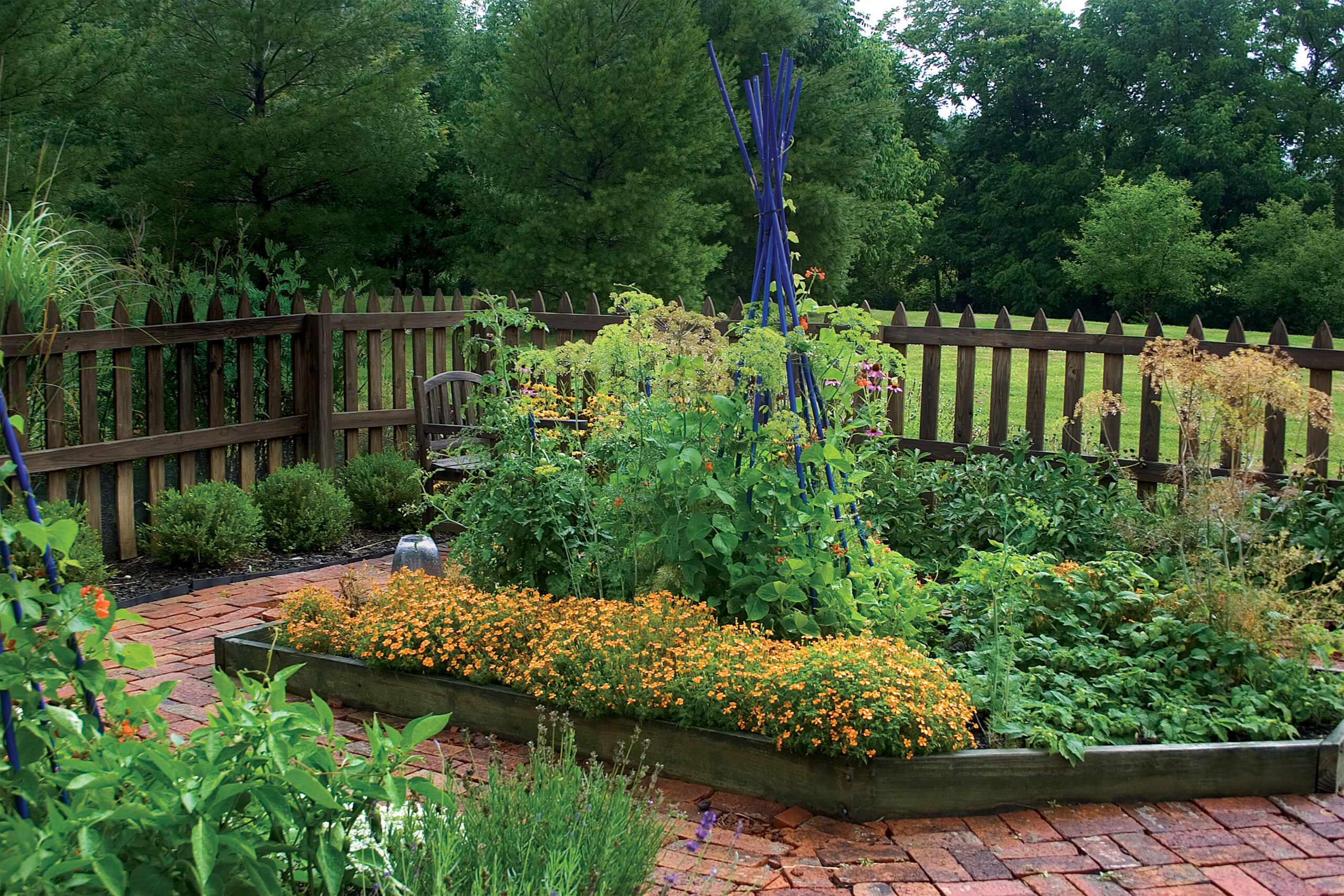
Bricks are timeless and easy
Brick-flanked beds are easy to build and lend a traditional cottage garden vibe to a veggie patch. The contrast of the bricks against the flagstones makes the beds even more attractive.
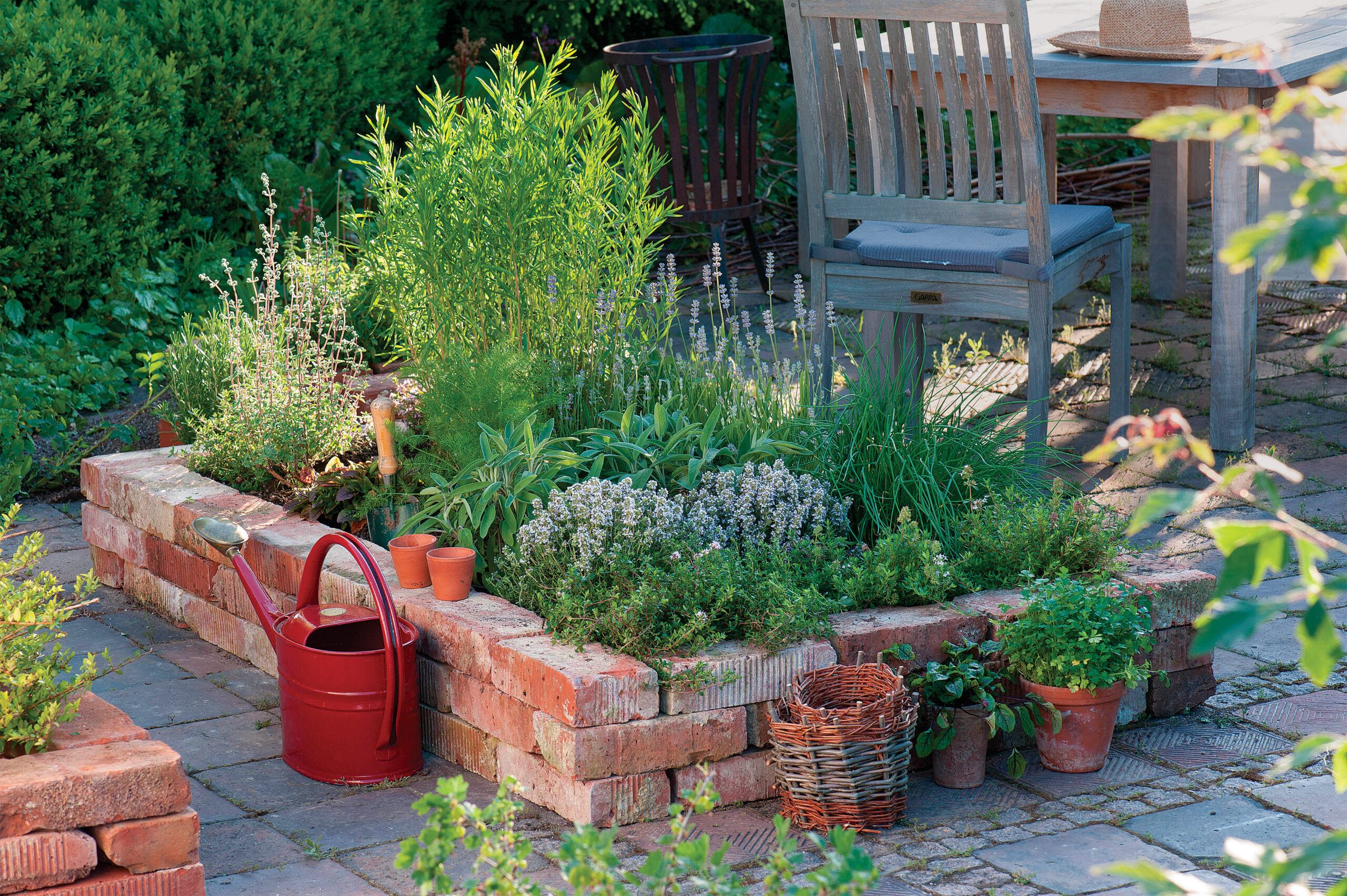
Beams are sturdy and comfortable
This collection of beds was constructed with hefty wooden beams that will last for quite a few years. A bonus is that the wideness of the beams provides a comfortable place to sit while weeding or sowing seeds.
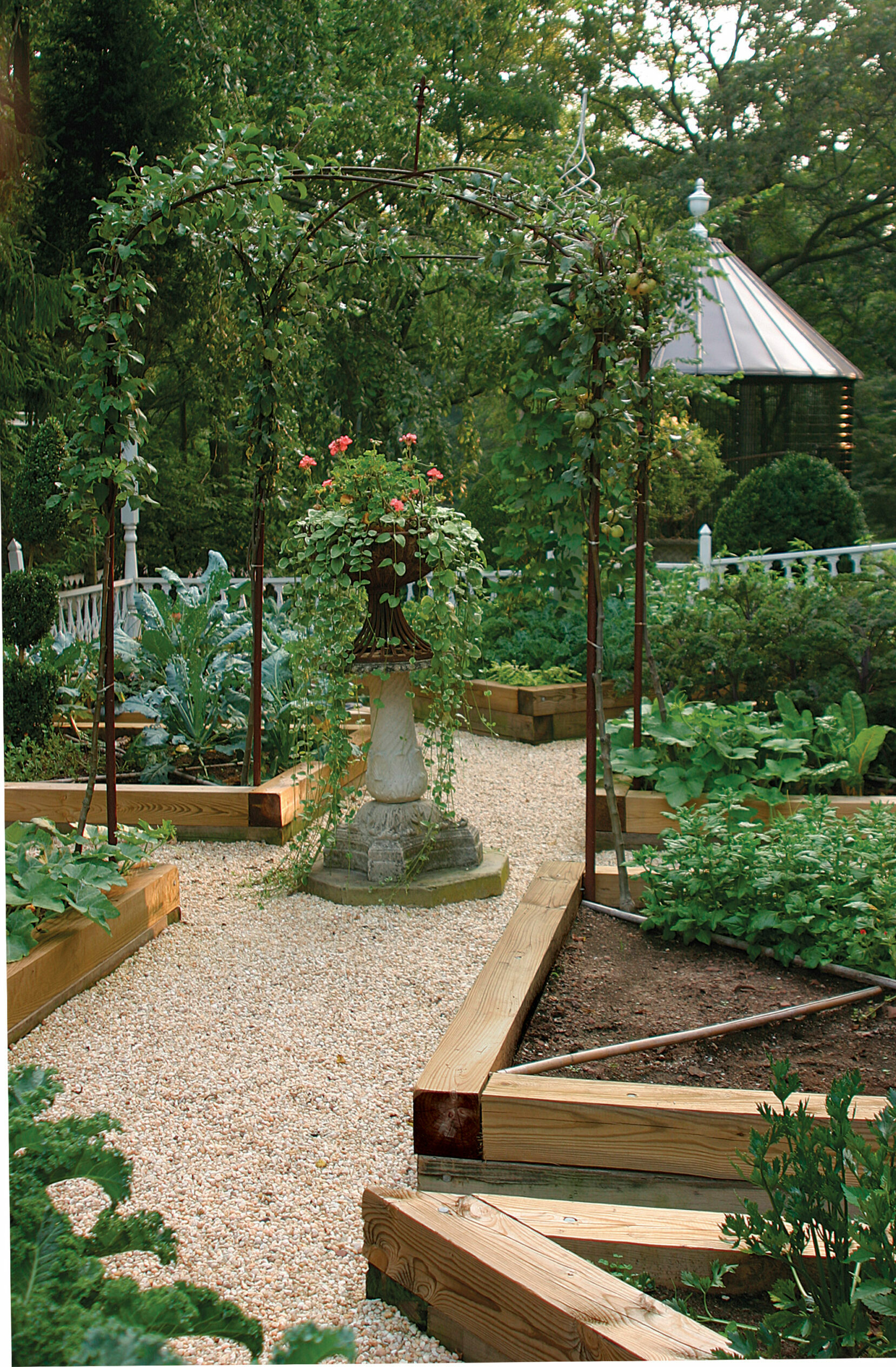
Stone looks good everywhere
This stone-wall raised bed is a substantial and attractive addition to an overall garden design. It lends itself to both veggies and ornamental plants, making it a versatile design element.
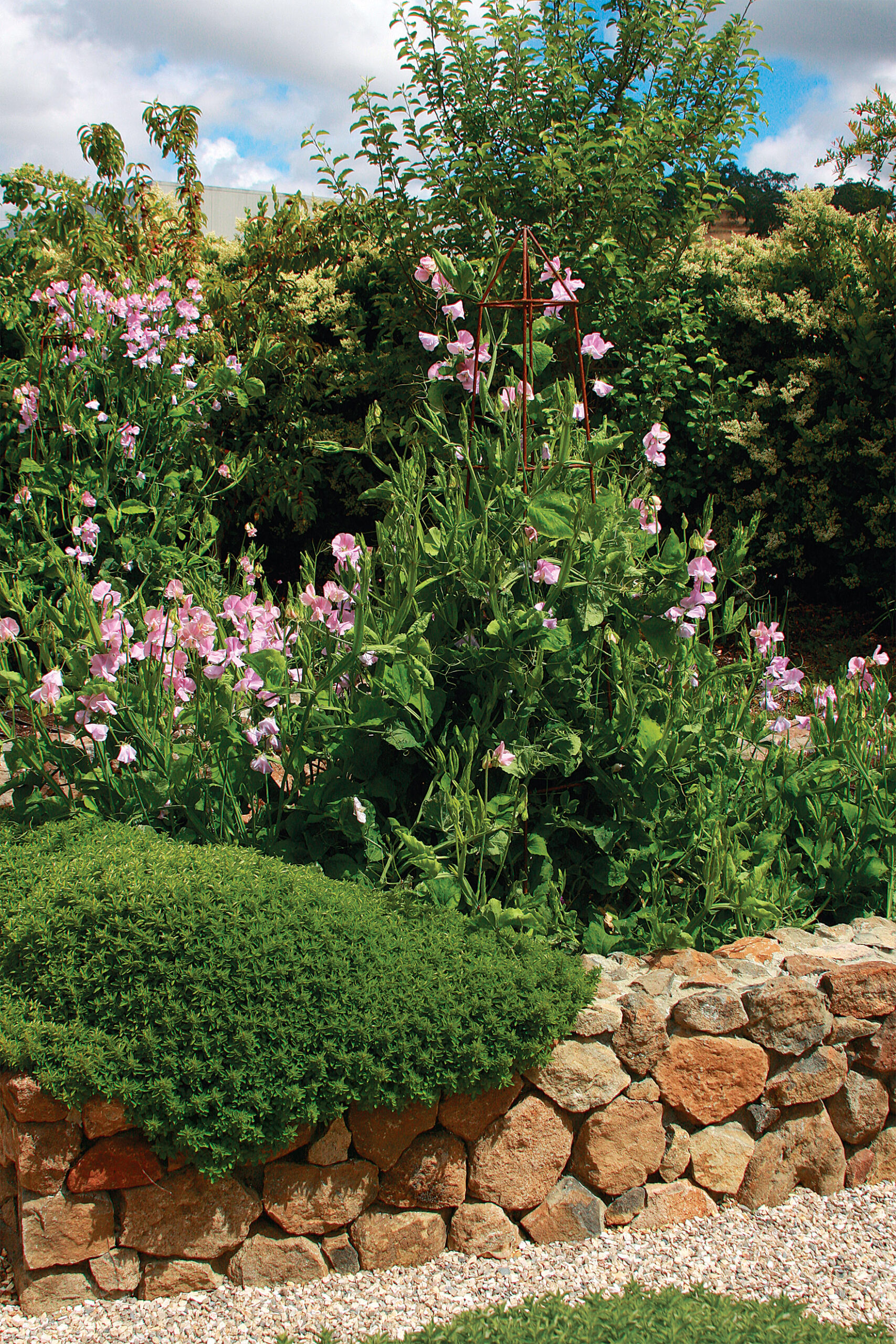
Long and skinny beds allow easy access
Raised beds should generally be just wide enough that you can reach the middle of the bed from each side without stepping into the soil, but you don’t need to limit their length. These long timber beds supply plenty of room for a big crop of veggies.
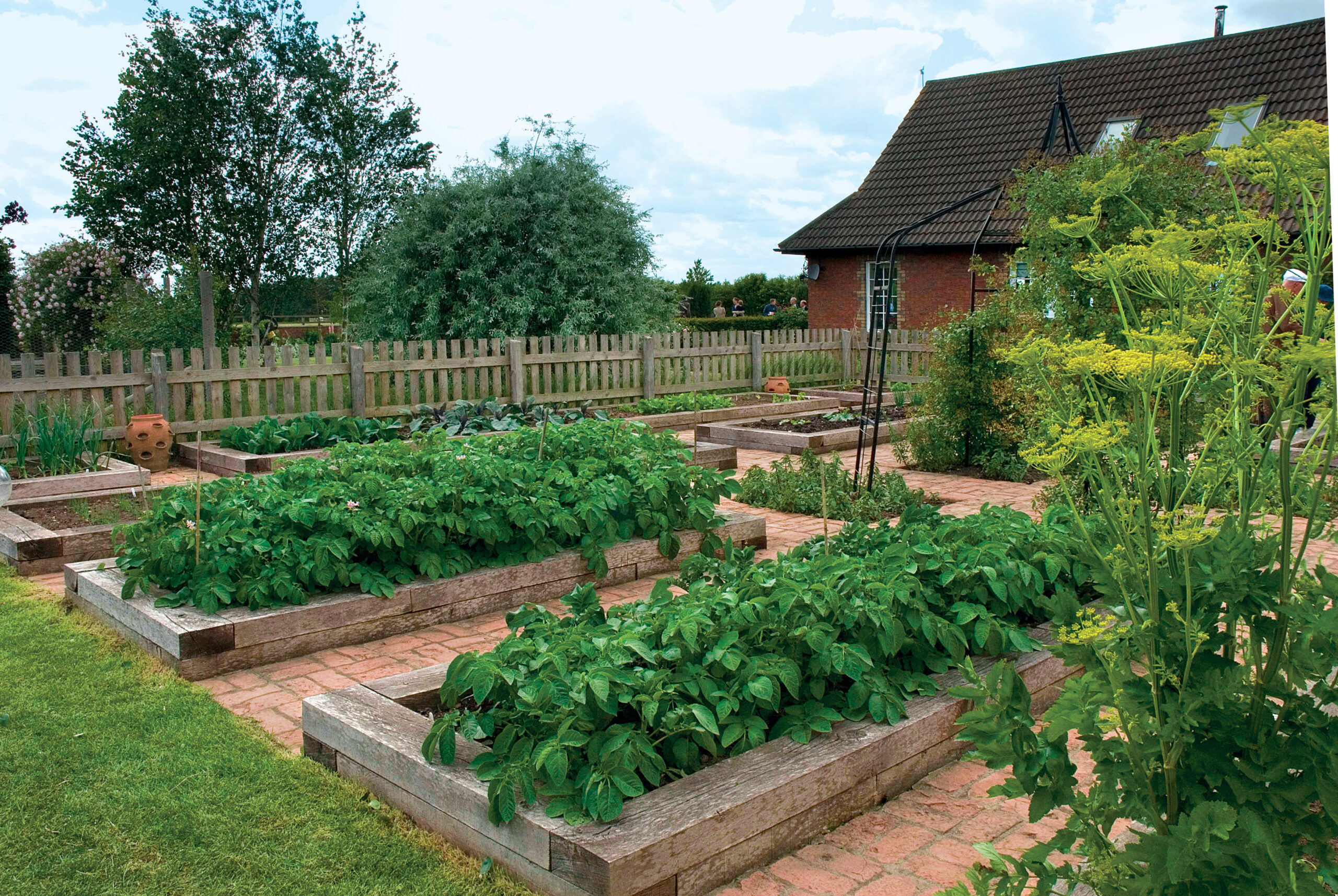
Get creative with placement
This imaginative gardener turned a rarely used driveway into a productive vegetable garden with some custom-made metal-raised beds. The substantial steel structures, configured in a decorative pattern with a central circle of gravel, make a visual impact and are just formal enough to keep this front yard from looking too casual.
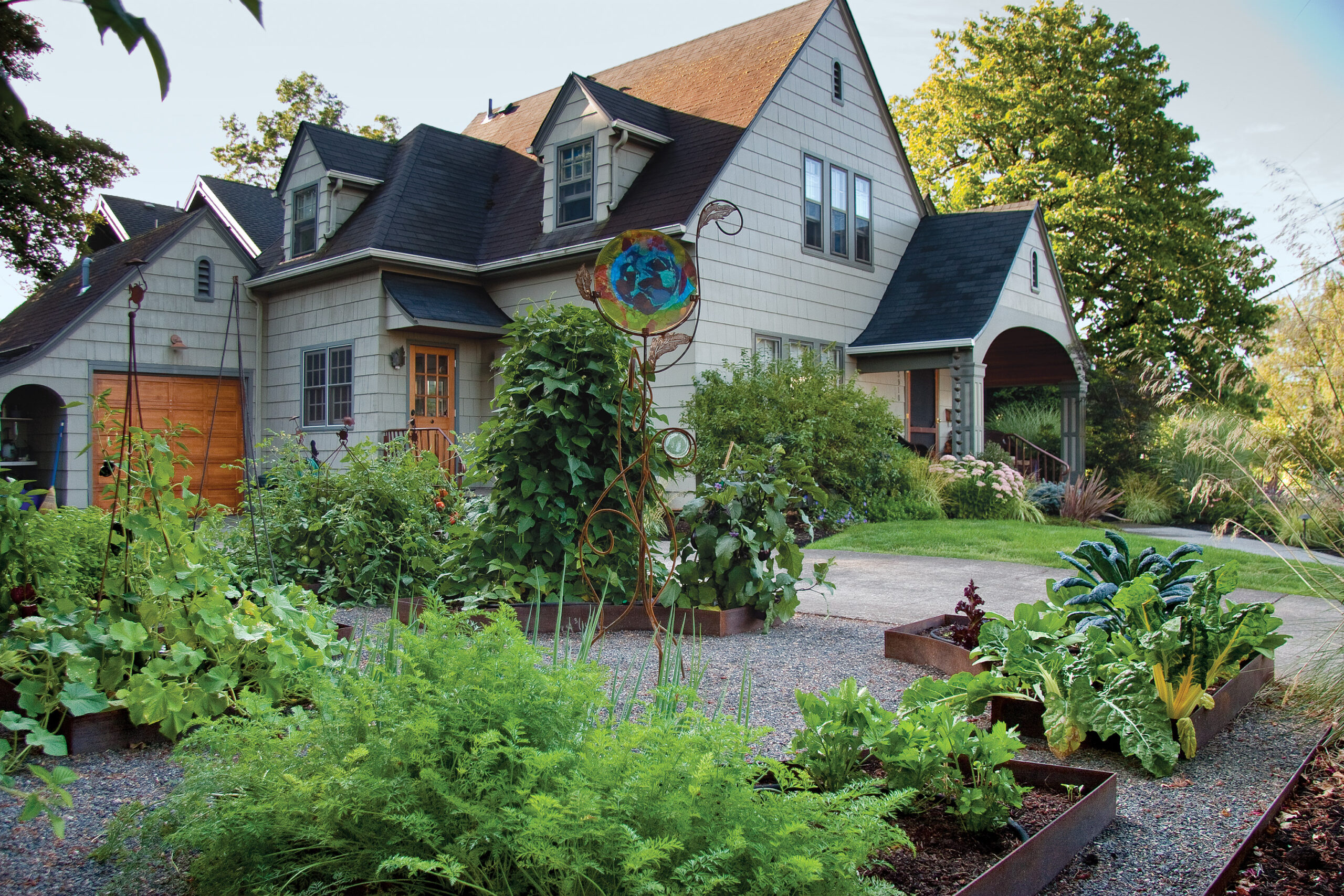
Additional benefits of raised beds
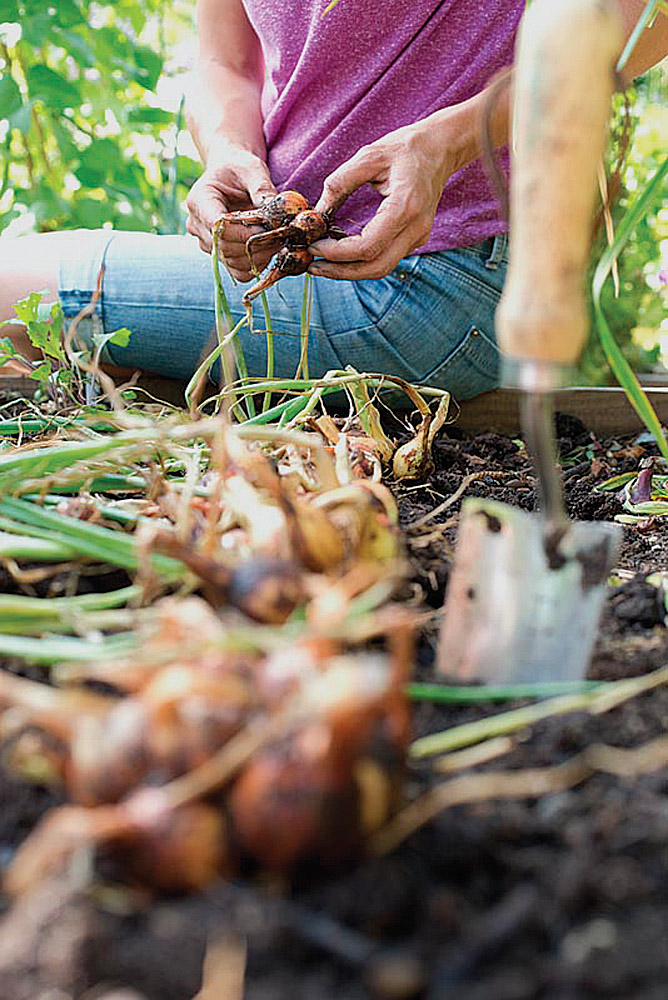
• No tilling. Because you never walk on the soil in a raised bed, it never gets compacted to the point of needing to be tilled.
• Fewer weeds. Rampantly spreading weeds, like crabgrass, won’t invade a raised bed like they will an in-the-ground planting. As an extra precaution, attach a weed-barrier fabric to the bottom of your raised bed before filling it with soil.
• Less pest damage. Attaching wire mesh to the bottom of your raised bed prevents moles and voles from making an entrance, and slugs are a little less likely to make it to your plants, too.
• More accessibility. Raising your garden means that you don’t have to reach or bend down quite as far. Your back will thank you.
• Longer growing season. A raised bed warms up earlier in spring, so you’ll be able to plant cool-season crops even sooner.
• Increased production. Because of its superior conditions and efficient use of space, a raised bed tends to produce more veggies per square foot than traditional plantings.
Fine Gardening Recommended Products

A.M. Leonard Deluxe Soil Knife & Leather Sheath Combo
Fine Gardening receives a commission for items purchased through links on this site, including Amazon Associates and other affiliate advertising programs.







Comments
Log in or create an account to post a comment.
Sign up Log in